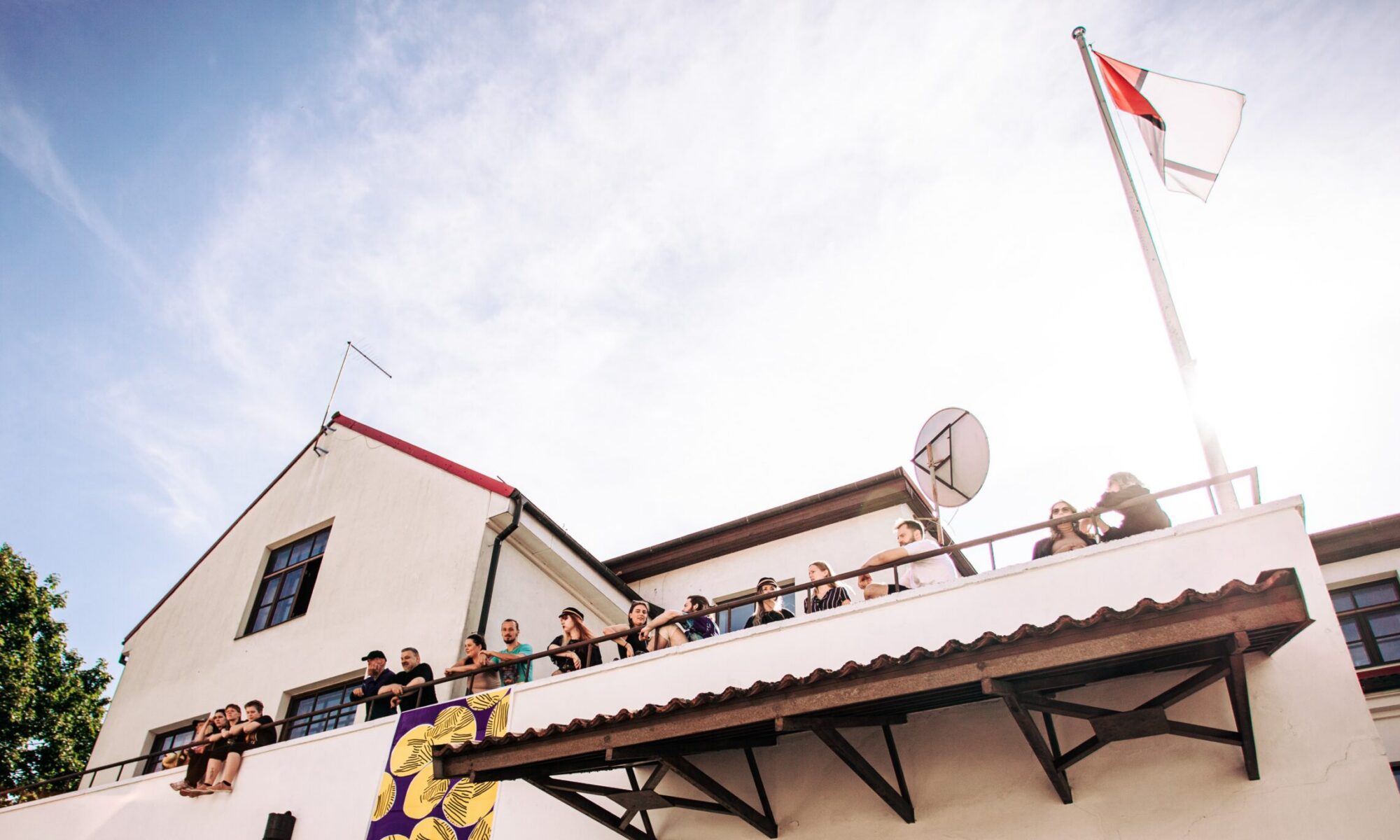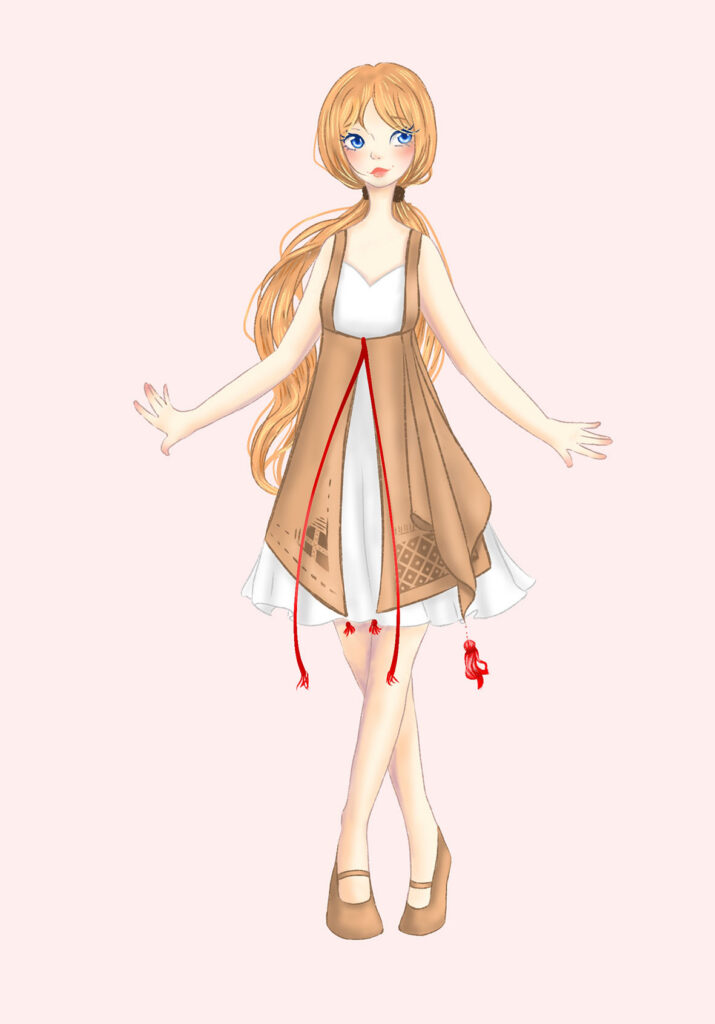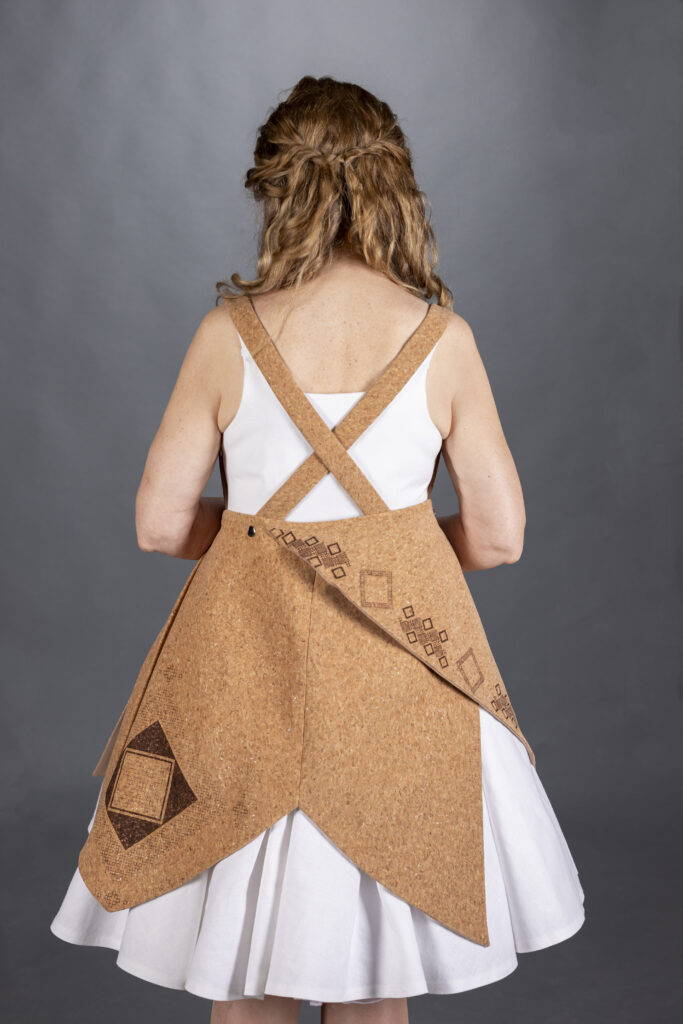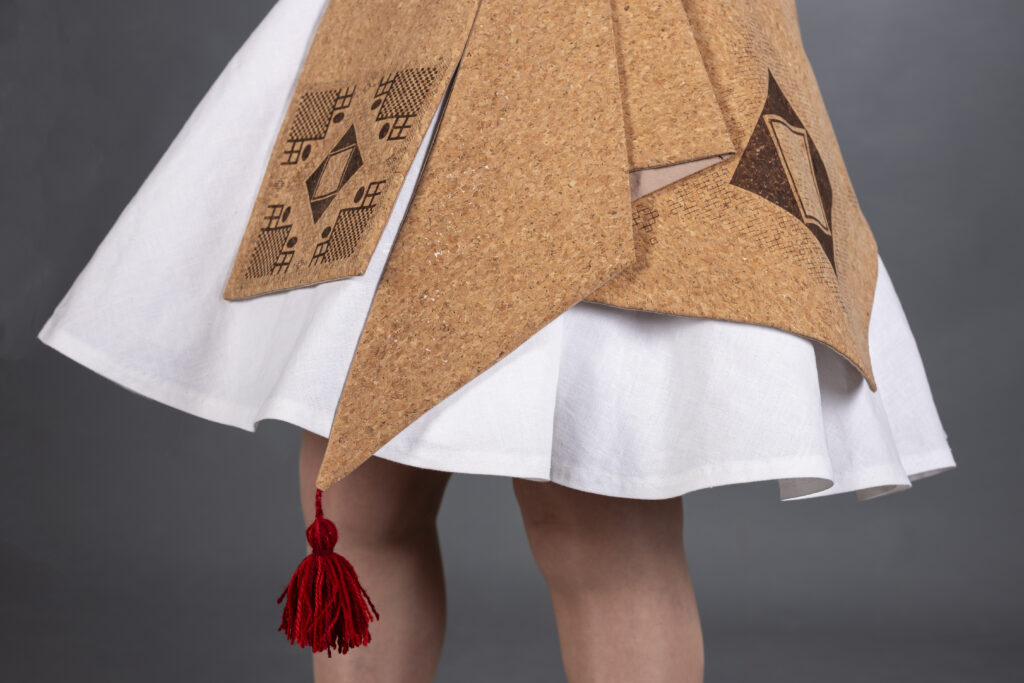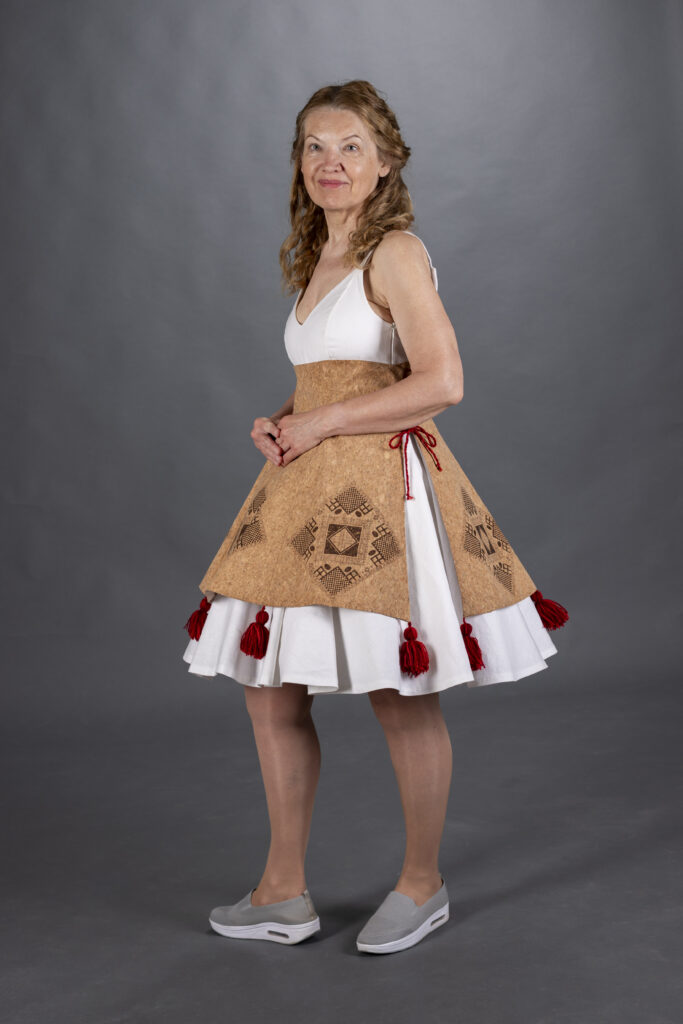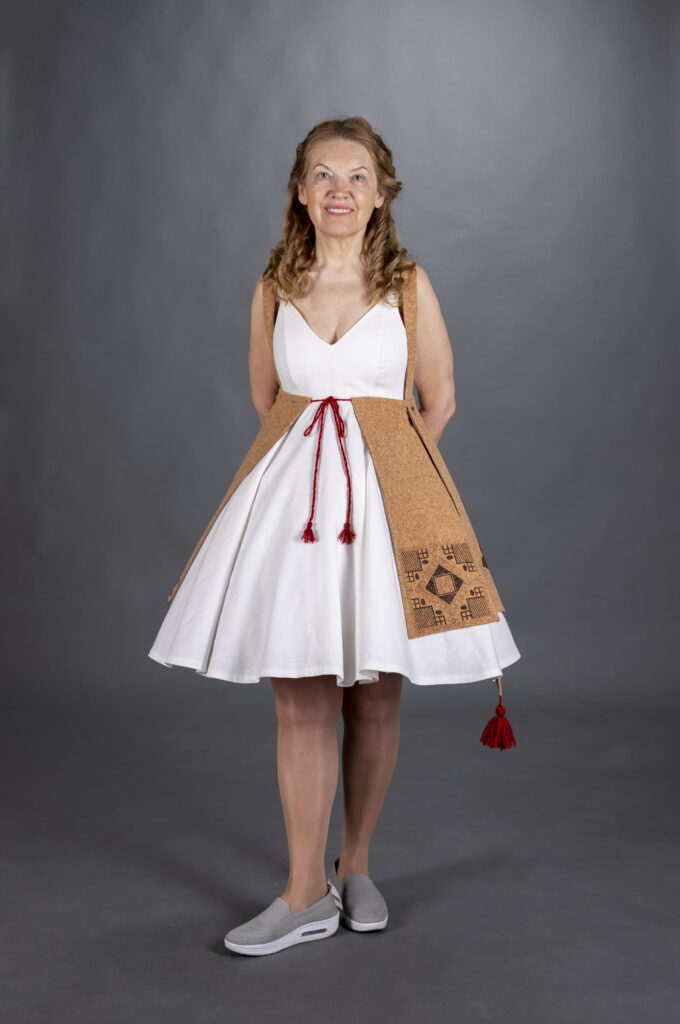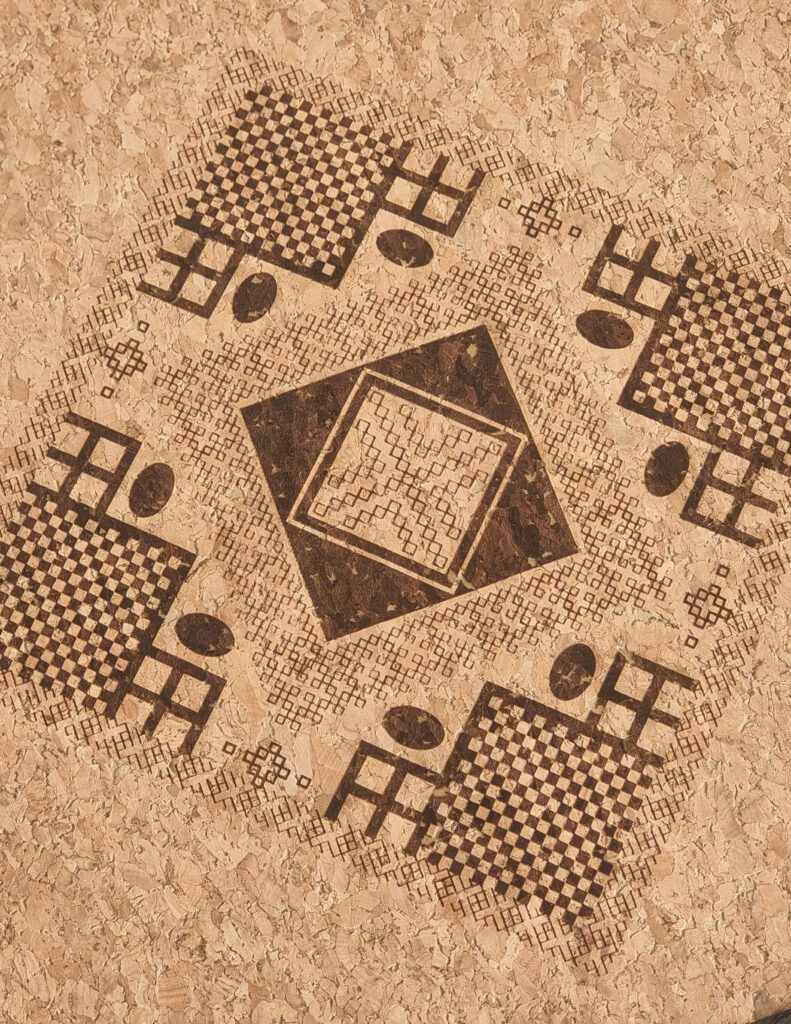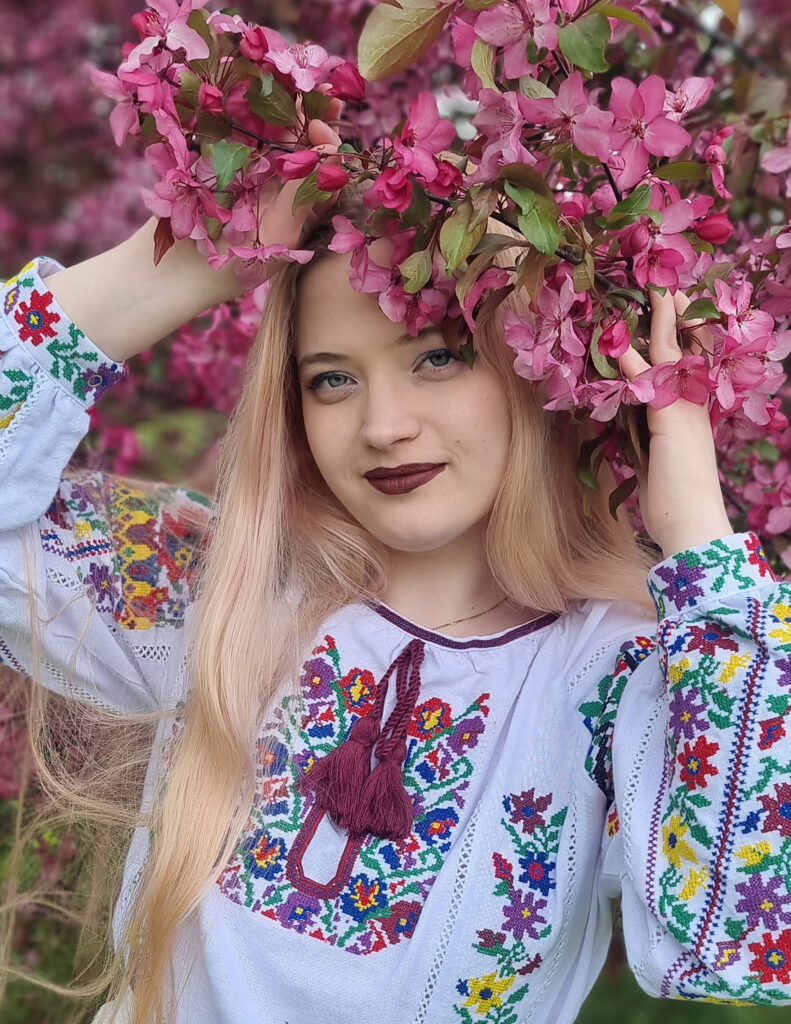Kollektsioon ODE on saanud inspiratsiooni setode ajaloolisest puusapõllest. Minu vanaema ja vaarema olid pärit Setomaalt ja töö kannab ka minu vaarema nime. Kollektsiooni kuuluvad pihikseelikukujulised põlled, mis on reguleeritavad paeltega ning sobivad eri suuruses kandjatele. Riided on kaunistatud seto puusapõlle mustritest inspireeritud geomeetrilise ornamendiga. Otsustasin kollektsiooni teha korktekstiilist, sest korkkangas on vastuvõetav ka inimestele, kes ei soovi nahka kanda, ka on materjal hästi hooldatav. Mustri kandsin korktekstiilile laseriga.
Teoreetilises osas tegin ülevaate seto naiste rahvariietest ja Eesti Rahva Muuseumi kogudes olevatest seto puusapõlledest.
The ODE collection draws inspiration from the historical hip aprons of the Seto people. My grandmother and great-grandmother come from Setomaa, and the work also bears my great-grandmother’s name.
The collection includes apron style skirts, which are adjustable with ties and suitable for wearers of different sizes. The garments are adorned with a geometric ornament inspired by Seto hip apron patterns.
I decided to make the collection from cork fabric because it is acceptable for people who prefer not to wear leather, and it is also easy to maintain. The pattern is laser engraves onto the cork fabric.
In the theoretical part, I provided an overview of Seto women’s folk costumes and Seto hip aprons found in the collections of the Estonian National Museum.
